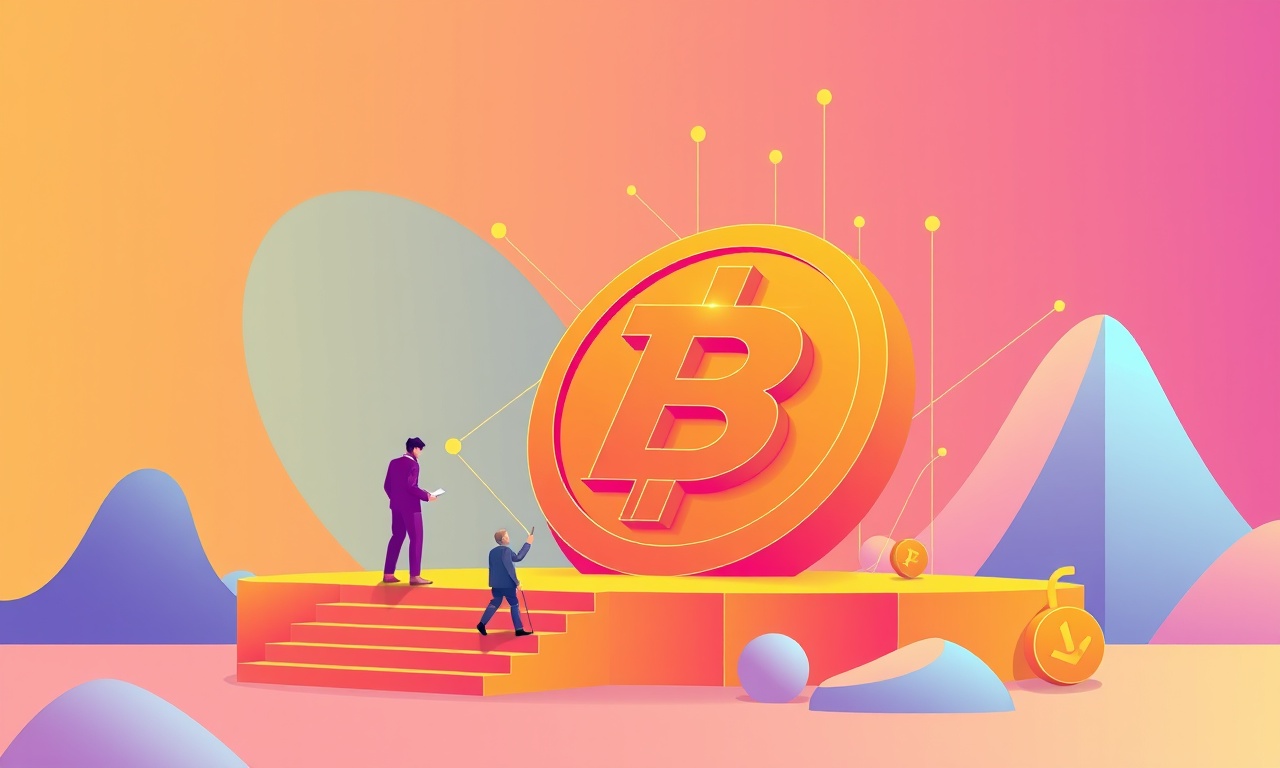Unlocking DeFi Foundations Blockchain Basics and Rollup Types

Unlocking DeFi Foundations: Blockchain Basics and Rollup Types
Blockchain is often described as a ledger, but it is far more than that. It is the technology that lets thousands of computers collaborate without a single trusted authority. When we talk about DeFi—financial services built on blockchains—we must understand the underlying layers, how they stay secure, and how newer scalability solutions like rollups change the game.
What Is a Blockchain?
At its core, a blockchain is a sequential chain of blocks, each block containing a set of transactions and a cryptographic reference to the block before it. This structure guarantees that once a transaction is recorded, it cannot be altered without re‑computing every subsequent block—a computationally expensive task that discourages tampering.
Transactions are grouped, verified, and added to the chain by participants called validators or miners, depending on the consensus protocol. The decentralized nature of blockchains eliminates single points of failure, making them resilient to censorship and downtime.

Key Components of a Blockchain
- Blocks – Containers that hold transaction data, a timestamp, a Merkle root (hash of all transactions), and the previous block’s hash.
- Consensus Layer – The algorithm that determines how participants agree on the current state. Popular models include Proof‑of‑Work, Proof‑of‑Stake, and Delegated Proof‑of‑Stake.
- Smart Contracts – Self‑executing code that runs on the blockchain, enabling programmable financial instruments.
- Cryptographic Primitives – Public‑private key pairs, digital signatures, and hash functions that provide authenticity and integrity.
- Network Layer – The peer‑to‑peer protocol that propagates blocks and transactions across nodes.
Each component must be carefully designed and audited because a flaw in any one area can compromise the entire system.
Consensus Mechanisms Explained
- Proof‑of‑Work (PoW): Miners expend computational energy solving puzzles. The first to find a solution broadcasts a block. PoW offers strong security but is energy‑intensive.
- Proof‑of‑Stake (PoS): Validators are selected proportionally to their token holdings. PoS drastically reduces energy consumption while maintaining similar security guarantees.
- Delegated Proof‑of‑Stake (DPoS): Token holders elect a small group of delegates to produce blocks. DPoS can increase throughput but introduces a more centralised governance structure.
Understanding which mechanism a blockchain uses is essential when evaluating its security posture and scalability.
Security Fundamentals in DeFi
Security in DeFi is multilayered:
- On‑Chain Security: Properly written smart contracts, rigorous audits, and formal verification reduce bugs that could lead to fund loss.
- Off‑Chain Security: Secure wallet management, cold storage, and robust authentication protect user keys.
- Governance Security: Transparent voting and upgrade mechanisms guard against malicious protocol changes.
- Economic Security: Adequate incentives and slashing penalties deter bad actors from compromising consensus.
The interplay between these layers determines whether a DeFi protocol can safely hold billions of dollars.
Smart Contracts and DeFi
Smart contracts automate financial logic, from lending and borrowing to derivatives and asset swaps. They are written in languages like Solidity or Rust and executed on virtual machines (e.g., EVM, Solana BPF). Because they are immutable once deployed, any flaw in the code can have catastrophic consequences. Thus, code audits and formal verification are non‑negotiable in production protocols.
Layer Two Solutions: The Need for Scalability
While Layer One blockchains provide security, they often suffer from low throughput and high fees. Layer Two solutions build on top of Layer One to increase capacity while preserving security. Rollups, sidechains, state channels, and plasma are common strategies. This article focuses on rollups, which bundle many transactions into a single proof and submit that to the base chain.
Rollup Types: Optimistic vs. Zero‑Knowledge
Rollups can be categorized primarily into two types based on how they prove validity:
| Feature | Optimistic Rollups | Zero‑Knowledge Rollups |
|---|---|---|
| Assumption | Transactions are valid unless challenged | Transactions are always valid as long as the cryptographic proof verifies |
| Fraud Proof | Requires a challenge window (e.g., 7 days) | Instant verification via zk‑SNARK or zk‑STARK |
| Data Availability | Public on L1 | Public, but data compression techniques are often used |
| Security Model | Relies on incentive for challengers | Relies on cryptographic proof of correctness |
| Typical Use Cases | Ethereum 2.0, Arbitrum, Optimism | zkSync, StarkNet, Loopring |
The choice between these rollups hinges on trade‑offs between latency, security assumptions, and cost.
Optimistic Rollups in Detail
Optimistic rollups assume that all submitted batches are correct. Validators post transaction data to Layer One, and a fraud‑challenge period follows. If a malicious batch is found, a fraud proof can be submitted to invalidate it. Because no computation is required during the challenge window, optimistic rollups can process thousands of transactions per second at a low cost.
How They Work
- Batch Creation – Multiple Layer Two transactions are aggregated into a batch.
- Submission to L1 – The batch root and state transition are posted to the base chain.
- Challenge Window – Validators can submit fraud proofs if they detect an error.
- Finalization – After the window, if no challenge arises, the batch becomes final.
The main advantage is the minimal computation on Layer One, but the drawback is the inherent latency introduced by the challenge period.
Zero‑Knowledge Rollups Explained
Zero‑Knowledge rollups (ZK rollups) use succinct proofs that attest to the correctness of all transactions in a batch. A zk‑SNARK or zk‑STARK proves that the state transition is valid without revealing the underlying data. Because the proof is verified instantly on Layer One, ZK rollups offer near‑instant finality.
Process Overview
- State Transition – All transactions are executed in the rollup chain.
- Proof Generation – A zk‑SNARK/STARK is generated, summarizing the state changes.
- Proof Submission – The proof and minimal data are posted to Layer One.
- Verification – L1 verifies the proof; if valid, the new state is accepted.
ZK rollups trade off more on‑chain computation (proof generation) for faster finality and stronger security guarantees, as fraud is mathematically impossible unless the underlying cryptographic assumptions break.
Comparative Analysis
| Criterion | Optimistic | Zero‑Knowledge |
|---|---|---|
| Finality Time | Hours (challenge window) | Seconds |
| Gas Cost on L1 | Low | Moderate |
| Security Assumptions | Economic (challengers) | Cryptographic |
| Scalability Ceiling | Up to 10k‑20k tx/s | Similar, but limited by proof size |
| Use‑Case Fit | High‑volume payments, DeFi lending | High‑security assets, privacy‑centric apps |
When selecting a rollup, consider your application's tolerance for latency, the value of assets handled, and your willingness to invest in more complex cryptography.
Step‑by‑Step Guide to Deploying a DeFi Protocol on a Rollup
- Choose a Rollup Platform – Evaluate Optimistic vs. ZK based on your risk profile.
- Develop Smart Contracts – Write contracts using the rollup’s native language or fork from an existing template.
- Audit Code – Engage third‑party auditors familiar with rollup nuances.
- Test on Testnet – Deploy to the rollup’s test network; simulate user interactions.
- Deploy to Mainnet – After passing audits, publish contracts to the rollup’s main chain.
- Integrate Front‑End – Ensure wallets and DApps communicate with the rollup provider’s RPC.
- Monitor State – Set up tools to watch gas usage, transaction throughput, and potential fraud attempts.
- Governance and Upgrades – Plan upgrade paths and governance mechanisms to adapt to market changes.
Each step reduces risk and aligns the protocol with the rollup’s security model.
Risks and Mitigations
| Risk | Description | Mitigation |
|---|---|---|
| Fraud on Optimistic Rollups | Malicious batch could be accepted if no one challenges. | Encourage active monitoring, reward challenge submissions, use off‑chain fraud detection services. |
| Proof Generation Costs | ZK rollups require heavy computation. | Optimize circuit design, outsource proof generation, or use hybrid solutions. |
| Data Availability | If rollup operator goes offline, data may be inaccessible. | Use redundant data availability layers, rely on community‑driven solutions. |
| Governance Attacks | Malicious actors could influence upgrade paths. | Implement multi‑sig safeguards, decentralize governance voting, and use timelocks. |
| Regulatory Uncertainty | DeFi protocols may face legal scrutiny. | Maintain compliance records, consider jurisdiction‑specific tokens, and engage legal counsel. |
Understanding and planning for these risks is as important as the technical implementation.
Best Practices for Secure Rollup‑Based DeFi
- Layered Security – Combine smart contract audits, formal verification, and runtime monitoring.
- Transparent Operations – Publish upgrade plans, audit reports, and governance decisions.
- Community Engagement – Foster an active community that can identify and report anomalies.
- Data Redundancy – Use multiple data availability solutions to prevent censorship.
- Continuous Improvement – Keep protocols up to date with the latest rollup innovations and security patches.
Adhering to these practices can help a DeFi protocol thrive on a rollup platform while protecting user assets.
Looking Ahead: The Evolution of Rollups
As rollup technology matures, we anticipate hybrid models that blend optimistic and zero‑knowledge techniques, offering the best of both worlds. Layer‑three solutions and cross‑chain bridges will further enhance scalability and interoperability. Moreover, the shift toward permissionless, composable DeFi ecosystems will demand even stronger security guarantees, making cryptographic proof systems a cornerstone of future infrastructure.
Conclusion
DeFi is built on a foundation of secure, decentralized blockchain technology. Grasping the core elements—blocks, consensus, smart contracts—and mastering Layer Two solutions like rollups is essential for anyone looking to develop, audit, or invest in DeFi projects. Optimistic and zero‑knowledge rollups each provide distinct advantages; choosing the right one depends on your application’s requirements for speed, cost, and security.
By following the step‑by‑step deployment guide, mitigating risks proactively, and adhering to best practices, developers can unlock the full potential of rollup‑based DeFi, delivering fast, cheap, and secure financial services to users worldwide.
.png)
Emma Varela
Emma is a financial engineer and blockchain researcher specializing in decentralized market models. With years of experience in DeFi protocol design, she writes about token economics, governance systems, and the evolving dynamics of on-chain liquidity.
Discussion (8)
Join the Discussion
Your comment has been submitted for moderation.
Random Posts

Smart Contract Risk DeFi Insurance and Capital Allocation Best Practices
Know that smart contracts aren’t foolproof-beyond bugs, the safest strategy is diversified capital allocation and sound DeFi insurance. Don’t let a single exploit derail your portfolio.
8 months ago

Dive Deep into DeFi Protocols and Account Abstraction
Explore how account abstraction simplifies DeFi, making smart contract accounts flexible and secure, and uncover the layered protocols that empower open finance.
8 months ago

Token Standards Unveiled: ERC-721 vs ERC-1155 Explained
Discover how ERC-721 and ERC-1155 shape digital assets: ERC-721 gives each token its own identity, while ERC-1155 bundles multiple types for efficiency. Learn why choosing the right standard matters for creators, wallets, and marketplaces.
8 months ago

From Theory to Practice: DeFi Option Pricing and Volatility Smile Analysis
Discover how to tame the hype in DeFi options. Read about spotting emotional triggers, using volatility smiles and practical steps to protect your trades from frenzy.
7 months ago

Demystifying DeFi: A Beginner’s Guide to Blockchain Basics and Delegatecall
Learn how DeFi blends blockchain, smart contracts, and delegatecall for secure, composable finance. This guide breaks down the basics, shows how delegatecall works, and maps the pieces for users and developers.
2 months ago
Latest Posts

Foundations Of DeFi Core Primitives And Governance Models
Smart contracts are DeFi’s nervous system: deterministic, immutable, transparent. Governance models let protocols evolve autonomously without central authority.
2 days ago

Deep Dive Into L2 Scaling For DeFi And The Cost Of ZK Rollup Proof Generation
Learn how Layer-2, especially ZK rollups, boosts DeFi with faster, cheaper transactions and uncovering the real cost of generating zk proofs.
2 days ago

Modeling Interest Rates in Decentralized Finance
Discover how DeFi protocols set dynamic interest rates using supply-demand curves, optimize yields, and shield against liquidations, essential insights for developers and liquidity providers.
2 days ago
